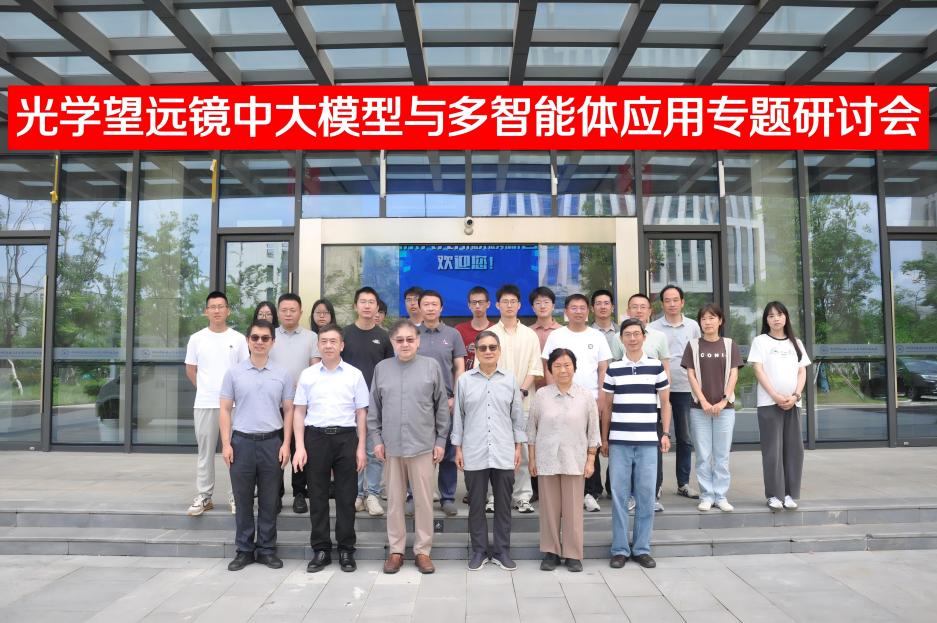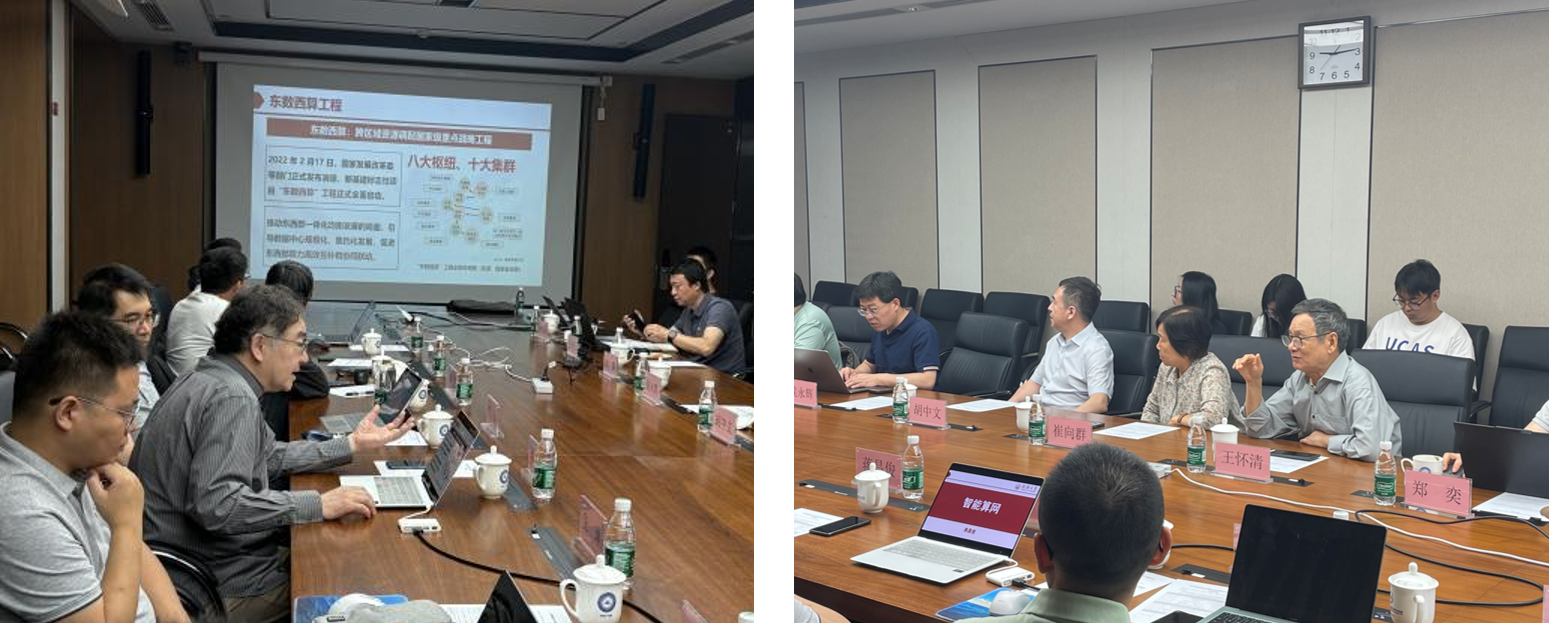On June 24, 2025, the Symposium on Large-Scale Models and Multi-Agent Systems Applications in Optical Telescopes was organized by the Nanjing Institute of Astronomical Optics and Technology (NIAOT), Chinese Academy of Sciences.
The event brought together experts and early-career researchers from prominent institutions including Tongji University, Nanjing University, Nanjing University of Posts and Telecommunications, Shandong University of Science and Technology, and the host institution NIAOT.

Fig. 1. Group photo of participants at the Symposium on Large-Scale Models and Multi-Agent Systems Applications in Optical Telescopes
The symposium comprised seven academic presentations, initiating with Prof. Hu Zhongwen, Deputy Director of NIAOT, outlining the development imperatives for astronomical optics.
Academician Jiang Changjun from Tongji University presented advancements in intelligent computing networks and computational power services, while demonstrating their innovative edge-based Intelligent Mobile Data Pod with practical implementation insights.
Professor Wang Huaiqing of NIAOT discussed agent and multi-agent systems, advocating an AI platform integrating telescope instrumentation to support medium-scale models as the core infrastructure for astronomical applications.
The technical sessions covered multi-agent systems, intelligent computing networks, robotic process automation (RPA), large model applications in astronomy, adaptive optics, control systems for 14.5m telescopes, large-aperture mirror fabrication/testing, and NIAOT's development on optical interferometry array with 100-meter baseline.
Participants engaged in extensive discussions and proposed strategic recommendations for empowering next-generation telescope ecosystems with artificial intelligence.

Fig. 2. In-session view of the Symposium on Large-Scale Models and Multi-Agent Systems Applications in Optical Telescopes
The symposium conducted in-depth discussions on AI+astronomical optics, covering application prospects, core technologies, and practical challenges.
Academician Cui Xiangqun from NIAOT proposed leveraging this symposium to consolidate prior collaborative achievements and integrate cutting-edge AI-astronomy developments, thereby injecting new momentum into technological innovation for astronomical optics.